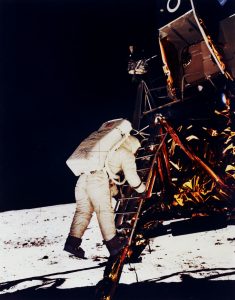I was in New Orleans last weekend, so I missed last week’s Caught in the Wild, so this is actually two weeks’ worth of catches. However, I wasn’t being lazy on my vacation. While I was in a N’Awlins jazz club, I heard a band open with… the Villains Theme!
That’s “Froggy Bottom Blues” by the Smoking Time Jazz Club. I highly recommend seeing them perform live.
Meanwhile, it seems that you guys have had busy ears, too!
First, Scott Keever has an update about the Law & Order Donk Donk sound: “For the record, Mike Post calls it the ‘Ching ching’ cuz of all the money he makes off of it – Heh heh… but don’t take my word for it… Go to 18:25 of this link – an interview with Mike Post. (I love this whole interview, by the way…When I have younger folks asking me about composing for TV and film, I send them to this interview – Mike Post is the coolest…)”
Well spied, Scott! And thanks! I was actually looking for bit of interview when I was writing the article and couldn’t find it. I love that Mike Post makes royalties off the sound because it’s technically a piece of music and not a sound effect.
Next, Daniel Taylor caught an instance of Entrance of the Gladiators: “It was used in one of the Madagascar movies, with inane lyrics attached.”
Oh boy. The culprit seems to be Madagascar 3:
Speaking of Entrance of the Gladiators, Roho had this tidbit: “Not ‘Gladiators’, but someplace pointed out that Jerry Goldsmith’s (awesome) Gremlins music was intended to be in the vein of the Circus Screamer.”
I. Love. Gremlins.
And yes, I can totally see how the theme can be a circus screamer:
And now… Red-Tailed Hawk updates. You guys caught a lot of Red-Tailed Hawks.
First, Jen Manna points out: “Pick just about any movie with a western theme, including Rango. … Also, all the Looney Tunes set in a western theme. Often times when Wile E. Coyote falls down a vast cavern, there’s a small hawk or eagle circling and that sound bite.”
Spacebug notes that: “Oh, just heard it, rewatching Cabin In the Woods! It shows up when the camper is going through the tunnel. But, as the rest of the movie, it’s making a comic nod to its ubiquitousness, so that’s kind of awesome.”
Neowolf says: “This sound shows up in World of Warcraft. For example, if you have a hunter character and switch it to use ‘Aspect of the Hawk’, the sound effect includes a hawk cry.”
Jennifer Mencken was on a roll: “Two for two tonight, both the Eddie Izzard Treasure Island and The Eagle with Channing Tatum.”
And everyone noted that the sound shows up in the intro of the Colbert Report. (Thanks to Roger Pavelle, Sandy Darst, Mandydax, and anyone else I missed.) The sound usually shows up as the very first sound in the episode, and then at the end of the theme song (over the image of an eagle). You can see it yourself in, well, just about any episode on the show’s website.
Finally, Mandydax gets super extra credit for locating video of a real Steller’s Jay mimicking the cry of a Red-Tailed Hawk. Behold as life imitates art:




